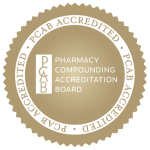What is Naltrexone?
Naltrexone is an opioid antagonist, meaning it blocks the opioid receptors in your brain. These receptors are meant to respond to endorphins – your body’s natural “feel good” chemicals. Opioids attach to these same receptors and produce a similar result. They block pain, slow the breathing rate, and produce generally calming and anti-depressing effect. As an opioid blocker, Naltrexone prevents opioids from attaching to your receptors and producing this result thus preventing patients from experiencing the high of opioid use. It is used when patient is in recovery from opioid addiction.
What is LDN?
As the name implies – Low Dose Naltrexone –however, it has quite the opposite effect. It increases the level of endorphins by partially and temporarily blocking the opioid receptors. This effect apparently is at its peak when the endorphin levels are normally their highest (around 3AM to 4AM). These blocked receptors signal to the brain that the endorphin levels are low, so it ramps up the body’s own production of endorphins.
In 1985-1986, a New York doctor – Dr. Bernard Behari discovered that this mechanism of action of LDN can benefit patients suffering with autoimmune conditions, cancer, HIV or AIDS, etc.
A lot of small studies have been done since then and it appears that LDN can be beneficial for a very large array of medical conditions.
LDN’s own website offers substantial medical evidence and information about when and how it can be used: www.lowdosenaltrexone.org
In this article, we’ll discuss to only to LDN and it use in SIBO
Now let us see what SIBO is?
SIBO – Small intestinal bacterial overgrowth is a complex condition that consists of:
- Chronic bacterial infection of the small intestine
- Bacteria may be species normally encountered in gut however presence and amount are not normal for small intestine
- Bacteria may be pathogenic species
The cause is unknown, but some predisposing factors for SIBO are:
MMC dysfunction (motion migration complex = impaired gut motility)
◦ Dysautonomia (Dysfunction of the Autonomic Nervous System)
◦ Opiate use/abuse
Hypochlorhydria ◦ PPI (Proton Pump Inhibitor) usage
Long term antibiotic usage ◦ Lyme disease
Ileocecal valve dysfunction
SIBO SYMPTOMS
▪ IBS – bloating, cramps, constipation/diarrhea
▪ Malabsorbtion – steatorrhea, weight loss
▪ Leaky Gut Syndrome – Fatigue, joint pain, rashes, mood disorders, cognition, headache, “sensitivities”
SIBO IS ASSOCIATED WITH VARIOUS OTHER DISORDERS
Gastro-Intestinal ◦ IBS (Irritable Bowel Syndrome),
◦ IBD (Inflammatory Bowel Disease),
◦ Celiac Disease
◦ Liver disease
Fibromyalgia
Neurologic ◦ Parkinson’s Disease,
◦ Muscular Dystrophy,
◦ Dysautonomia
Inflammatory/Autoimmune ◦ Rheumatoid Arthritis,
◦ Scleroderma,
◦ Lyme Disease
SIBO TREATMENT
□ Prokinetic agents ▪ LDN,
▪ Erythromycin
□ Diet is extremely important ▪Low FODMAP (“Fermentable Oligo-, Di-, Mono-saccharides and Polyols”) diet
▪ Elemental diet
□ Probiotics
□ Antimicrobials ▪ Antibiotics
▪ Antimicrobial herbs
HOW LDN CAN HELP TREAT SIBO?
- LDN is naltrexone administered in low dose, <10% of the typical dose
- Antagonizes the μ and ĸ receptors
- LDN’s short half-life (6 hours) allows pulsatile dosing
- Feedback response to pulse dosing increases endorphins and enkephalins
- Opioid Growth Factor (OGF) and OGF receptors increase
LDN AT THE GUT LEVEL LEADS TO:
- OGF mediated modulation of T cell and B cell activity (immune modulation)
- Decreased inflammation
- Decreased permeability
- Toll like receptor stabilization
- Increased motility
CONCLUSION
- SIBO represents chronic bacterial infection of small intestine
- SIBO is associated with broad array of chronic conditions
- Enteric motility plays a key role in prevention and treatment of SIBO
- LDN’s prokinetic properties have been studied in treatment of SIBO and related conditions
- LDN has interactions with immune system, permeability, secretion and bacterial translocation which may also play a role in treatment of SIBO
- Randomized trials with LDN and SIBO would be helpful
- Patient awareness of SIBO may further interest into support of these studies
References:
LDN & Crohn’s – Dig Dis Sci 2011 Jul;56(7):2088-97
LDN & IBS – Dig Dis Sci 2006 Dec;51(12):2128-33
IBS & SIBO – Baillieres Clin Gastro 1988 Jan;2(1):123-39
LDN & SIBO – IJPC 2010 Mar;14(2):171-73
https://www.ncbi.nlm.nih.gov/pubmed/27392602
https://www.ncbi.nlm.nih.gov/pubmed/21380937
https://www.ncbi.nlm.nih.gov/pubmed/23188075
https://www.ncbi.nlm.nih.gov/pubmed/27561742
If you think your condition may benefit from LDN therapy, contact your health care professional and ask her/him to give us a call at: 646-530-0033
If you are interested in getting your LDN prescription filled from a reliable compounding pharmacy, please contact HALDEY pharmaceutical Compounding at: 646-530-0033
Disclaimer: The statements listed are provided for educational purposes only. The material listed here is not to be interpreted as a promise, guarantee or claim of therapeutic efficacy or safety. The information contained herein is not intended to replace or substitute for conventional medical care, or encourage its abandonment. The information in this article is compiled from several sources, the main one being Dr. Michael Arata’s presentation on LDN & SIBO.




